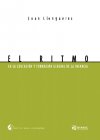As Josep Maria Ainaud de Lasarte states in his book 'Els mestres que ha fet Catalunya' (Teachers who built Catalonia), 'We can say that to speak of educational renovation in the field of music teaching in Catalonia means to speak of Joan Llongueres. Born in Barcelona in 1880, he devoted himself to studying music with Mas i Serracant, Granados, Morera and the conductor Millet'.
When he learned of the existence of the new musical method for Rhythmic Gymnastics created by Emile Jaques-Dalcroze, he was strongly attracted to it and, after courses in Geneva, he went away to Hellerau to study for his Certificate in that method, from Dalcroze himself. When he came back to Catalonia in 1913, he created the Catalan Institute of Rhythm and Visual studies in the premises of the Orfeó Català.
Llongueres shortly became essential to all school projects. With Alexandre Galí, he was the creator of the school Escola Vallparadís in Terrassa, and the director for Musical Education in the schools run by the City Council of Barcelona, and also in the School for the Blind, the Deaf and the Handicapped in Vilajoana, the Summer Schools of the Mancomunitat (a multi-district body), the Escola Blanquerna and the Institut Escola (School Institute) of the Generalitat (the Autonomous Government of Catalonia).
He composed over a hundred songs for children, and these, through the celebrations held in the Palau and in the schools, became traditional in Catalonia, examples being his 'Sant Nicloau' (Saint Nicholas), 'Les figures del pessebre' (the figures of the crib), 'Les formiguetes' (the little ants), 'El general Bum Bum' (General boom boom) etc.
Joan Llongueres also wrote for the newspaper 'La Veu de Catalunya' (the voice of Catalonia) and the mazine 'Revista Musical Catalana'. He was a long-serving president of the Lliga Sardanista de Catalunya (Sardana-dance League of Catalonia), and at the same time, through his interest in contemporary music, he was the secretary of the Associació Internacional de Música Moderna. He was a good poet, and won the top prize ('Mestre en Gai Saber') in Barcelona's poetry competition ('Jocs Florals') in 1934. He was the founder and director of the Municipal Music School of Terrassa and of the choir school Escola Coral. He also created the Acadèmia de Mùsica de Barcelona.
His great spirit of service always lead him to become involved in all the activities and manifestations of musical life in Catalonia. He died in Barcelona in 1953.












